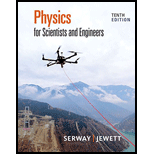
There is a 5K event coming up in your town. While talking to your grandmother, who uses an electric scooter for mobility, she says that she would like to accompany you on her scooter while you walk the 5.00-km distance. The manual that came with her scooter claims that the fully charged battery is capable of providing 120 Wh of energy before being depleted. In preparation for the race, you go for a “test drive”: beginning with a fully charged battery, your grandmother rides beside you as you walk 5.00 km on flat ground. At the end of the walk, the battery usage indicator shows that 40.0% of the original energy in the battery remains. You also know that the combined weight of the scooter and your grandmother is 890 N. A few days later, filled with confidence that the battery has sufficient energy, you and your grandmother drive to the 5K event. Unbeknownst to you, the 5K route is not on flat ground, but is all uphill, ending at a point higher than the starting line. A race official tells you that the total amount of vertical displacement on the route is 150 m. Should your grandmother accompany you on the walk, or will she be stranded when her battery runs out of energy? Assume that the only difference between your test drive and the actual event is the vertical displacement.
Want to see the full answer?
Check out a sample textbook solution
Chapter 8 Solutions
Physics for Scientists and Engineers
- I need help with how to solve this answer, thank you !arrow_forwardI need help with how to solve this answer, thank you !arrow_forwardIs work function of a metals surface related to surface energy and surface tension? What is the need to the work function component in the math of tension of metal surfaces that cannot be provided by existing equations of surface energy and surface tension? What are the key differences in each parameter and variables that allow for a differentiation of each function? What has a more significant meaning work function, surface tension or surface energy? Are there real differences and meaning? Please clarify and if possible provide examples . Does surface tension dependant on thickness of a metal or type of metal surface all having the same thickness? Clearly temperature has a profound change on surface tension what other variables besides temperature are key to surface tension. What if any is there a connection between crystal structure of the element and surface energy and tension? This is NOT a Assignment Question!!!arrow_forward
- The cylindrical beam of a 12.7-mW laser is 0.920 cm in diameter. What is the rms value of the electric field? V/marrow_forwardConsider a rubber rod that has been rubbed with fur to give the rod a net negative charge, and a glass rod that has been rubbed with silk to give it a net positive charge. After being charged by contact by the fur and silk...? a. Both rods have less mass b. the rubber rod has more mass and the glass rod has less mass c. both rods have more mass d. the masses of both rods are unchanged e. the rubber rod has less mass and the glass rod has mroe massarrow_forward8) 9)arrow_forward

 Physics for Scientists and Engineers with Modern ...PhysicsISBN:9781337553292Author:Raymond A. Serway, John W. JewettPublisher:Cengage Learning
Physics for Scientists and Engineers with Modern ...PhysicsISBN:9781337553292Author:Raymond A. Serway, John W. JewettPublisher:Cengage Learning Physics for Scientists and EngineersPhysicsISBN:9781337553278Author:Raymond A. Serway, John W. JewettPublisher:Cengage Learning
Physics for Scientists and EngineersPhysicsISBN:9781337553278Author:Raymond A. Serway, John W. JewettPublisher:Cengage Learning University Physics Volume 1PhysicsISBN:9781938168277Author:William Moebs, Samuel J. Ling, Jeff SannyPublisher:OpenStax - Rice University
University Physics Volume 1PhysicsISBN:9781938168277Author:William Moebs, Samuel J. Ling, Jeff SannyPublisher:OpenStax - Rice University College PhysicsPhysicsISBN:9781938168000Author:Paul Peter Urone, Roger HinrichsPublisher:OpenStax College
College PhysicsPhysicsISBN:9781938168000Author:Paul Peter Urone, Roger HinrichsPublisher:OpenStax College Principles of Physics: A Calculus-Based TextPhysicsISBN:9781133104261Author:Raymond A. Serway, John W. JewettPublisher:Cengage Learning
Principles of Physics: A Calculus-Based TextPhysicsISBN:9781133104261Author:Raymond A. Serway, John W. JewettPublisher:Cengage Learning





